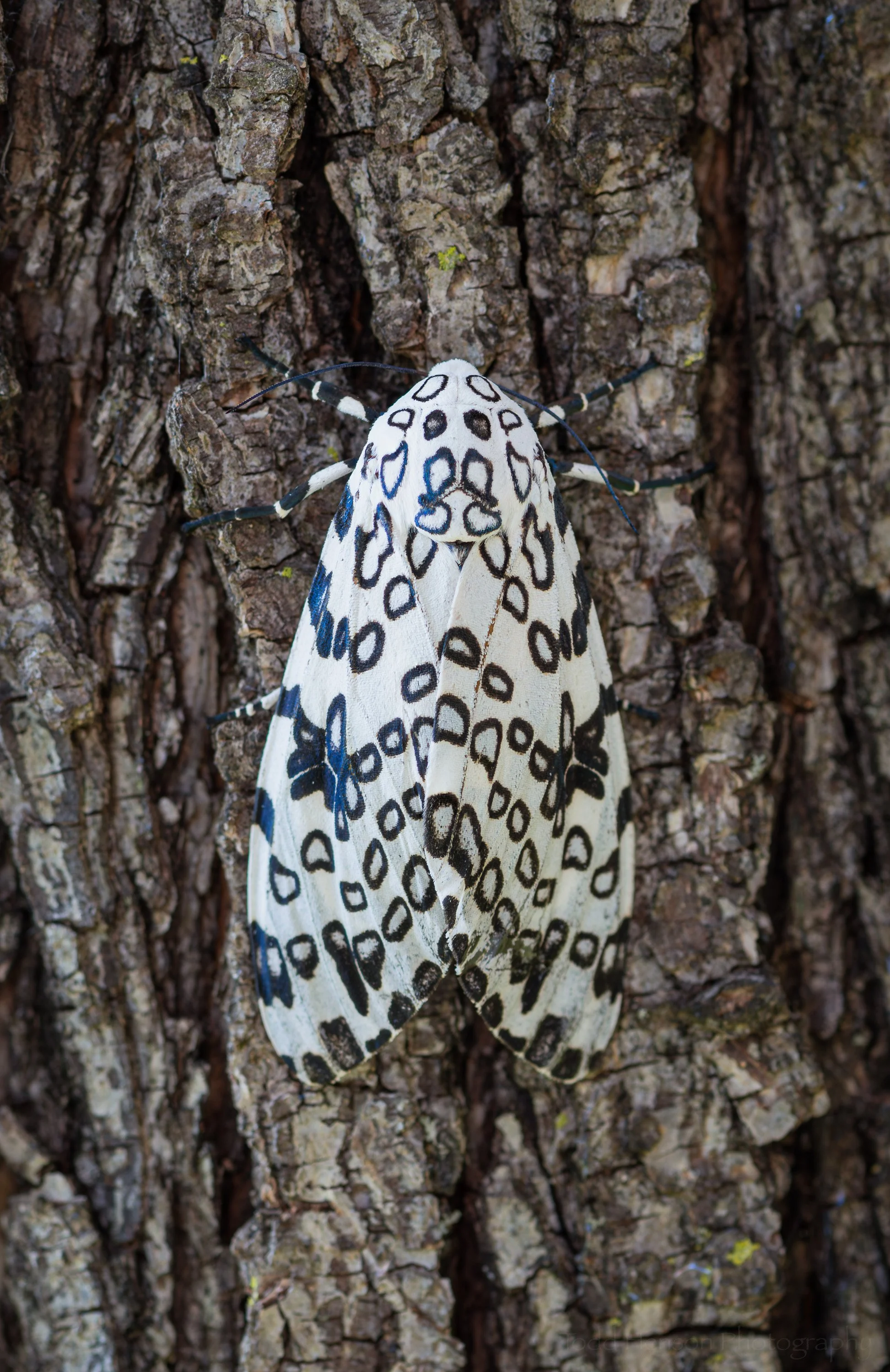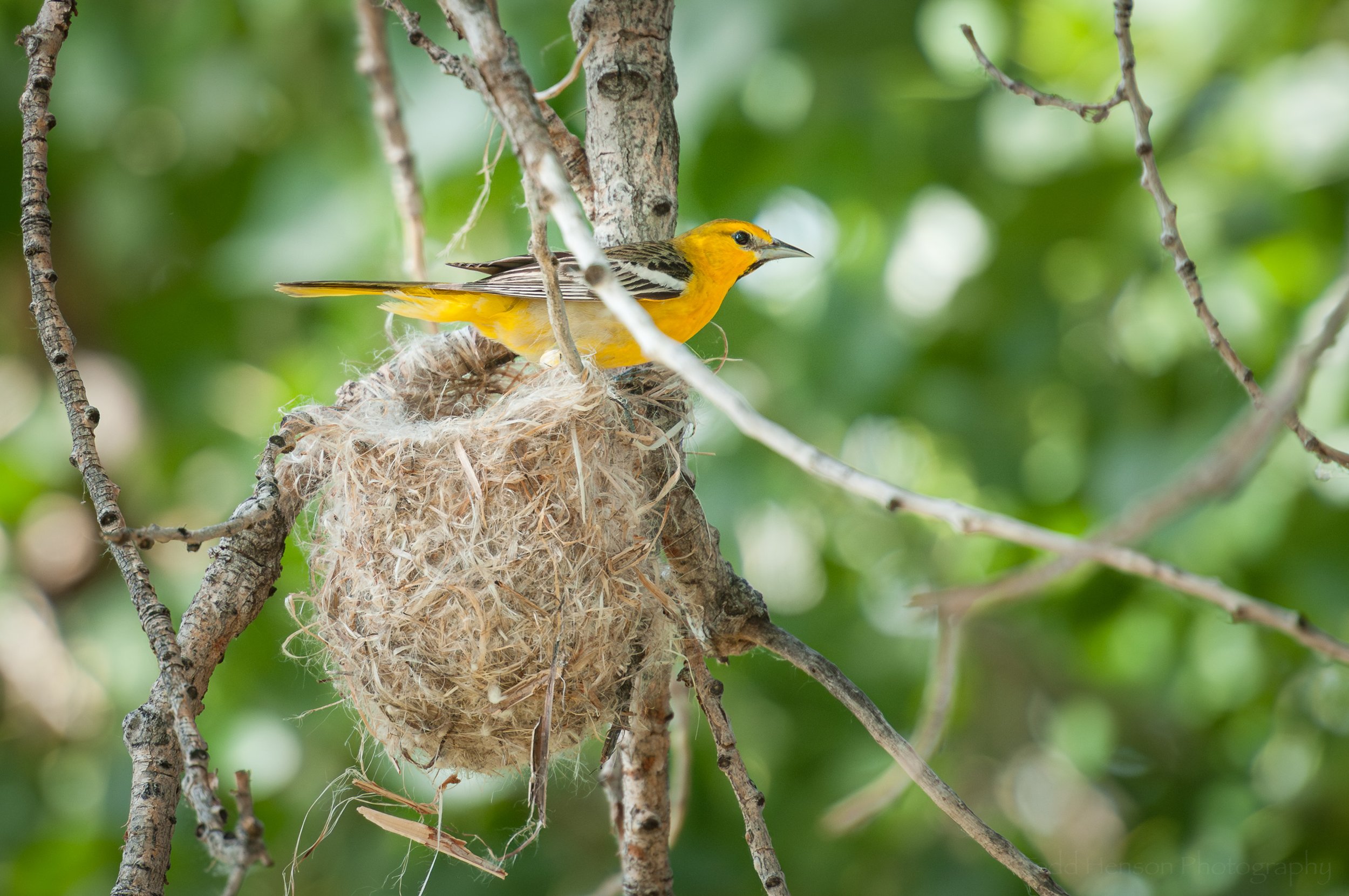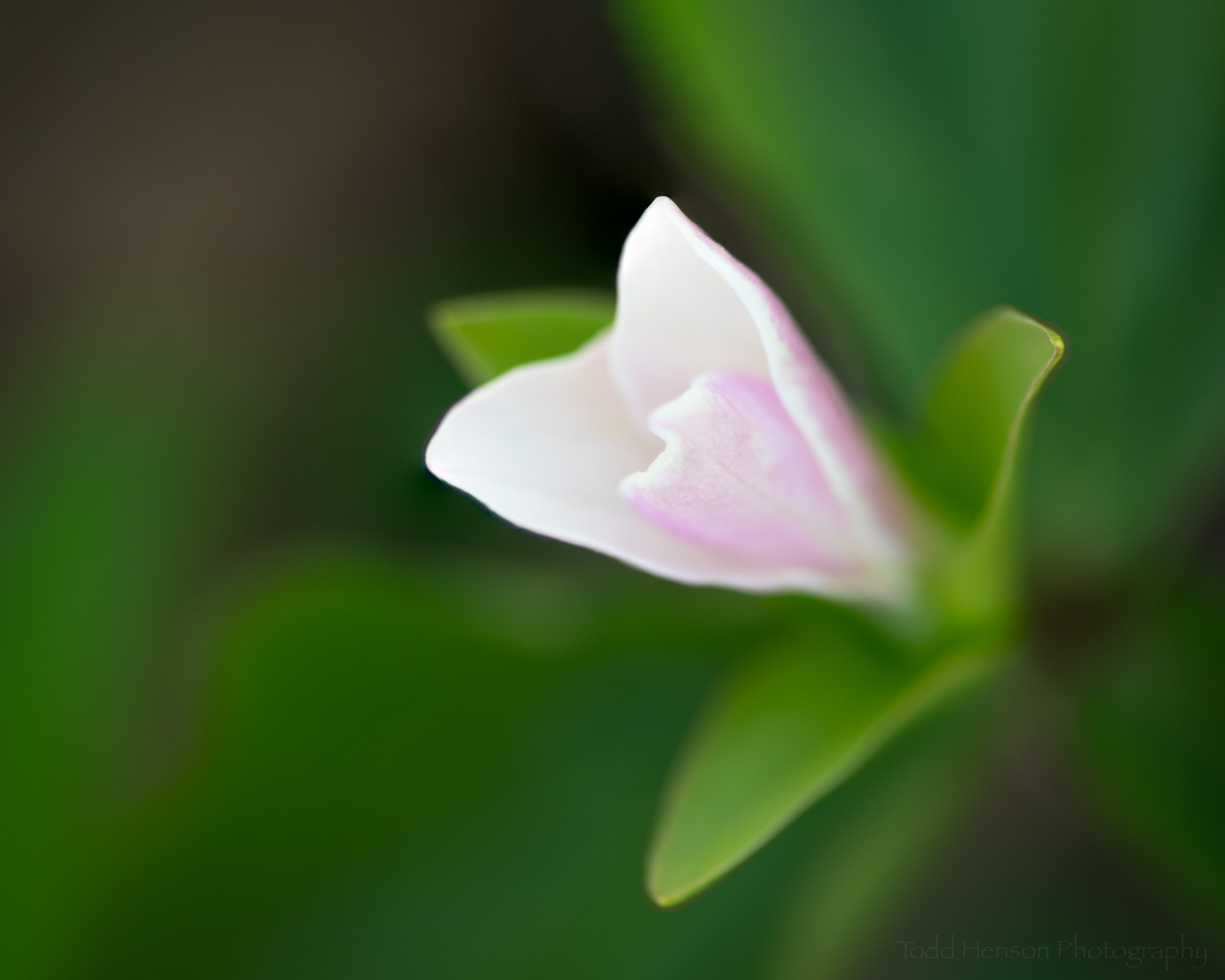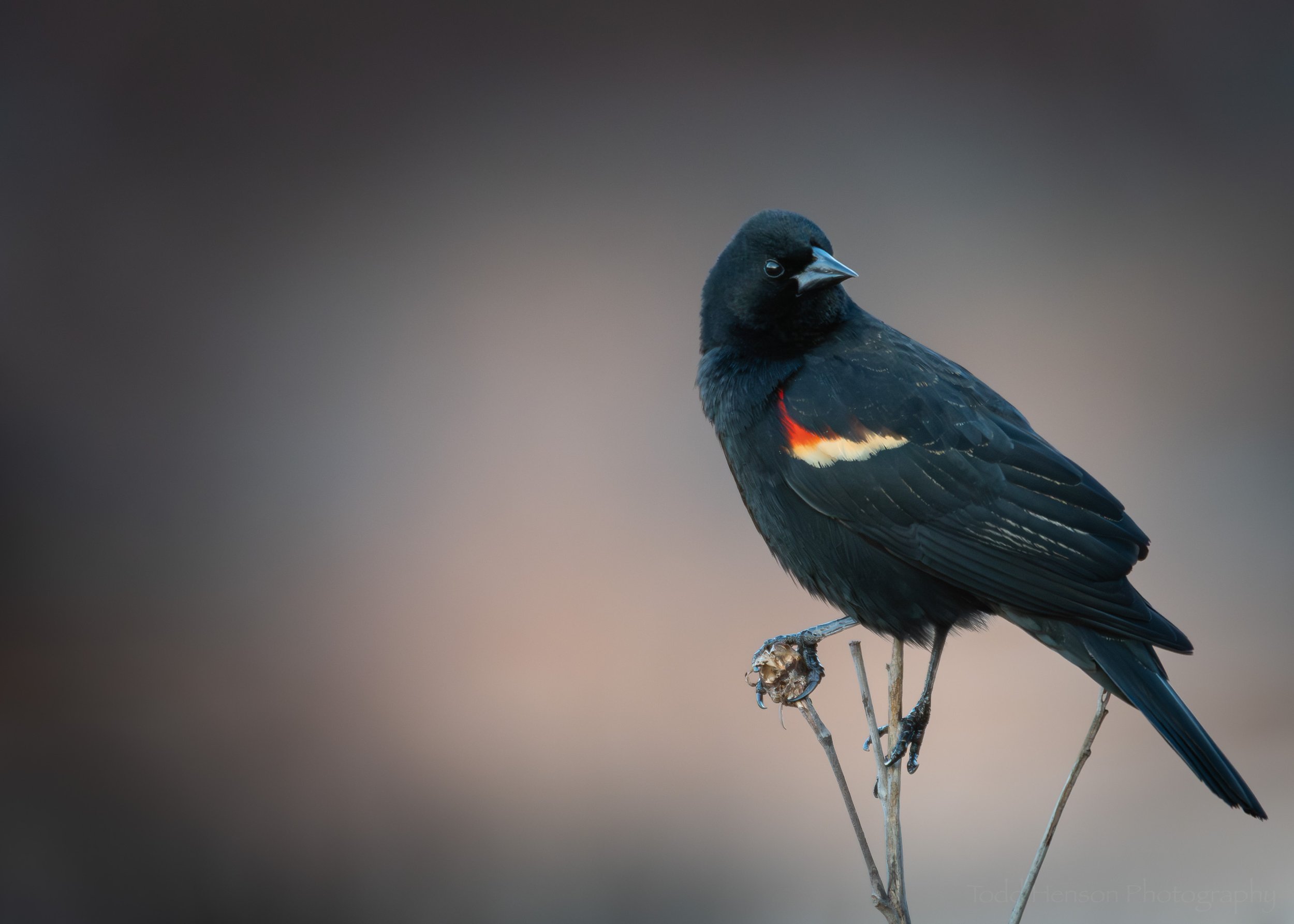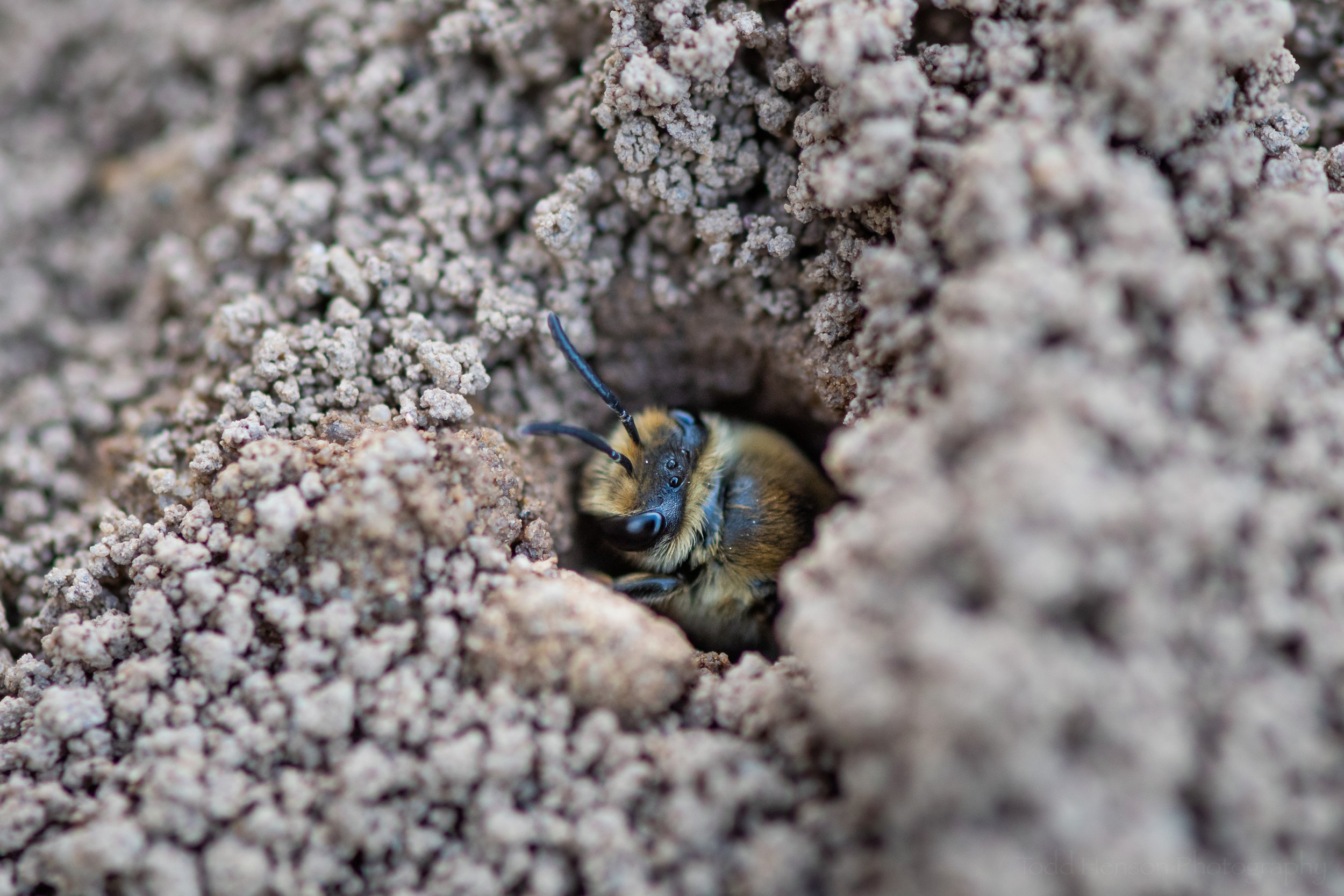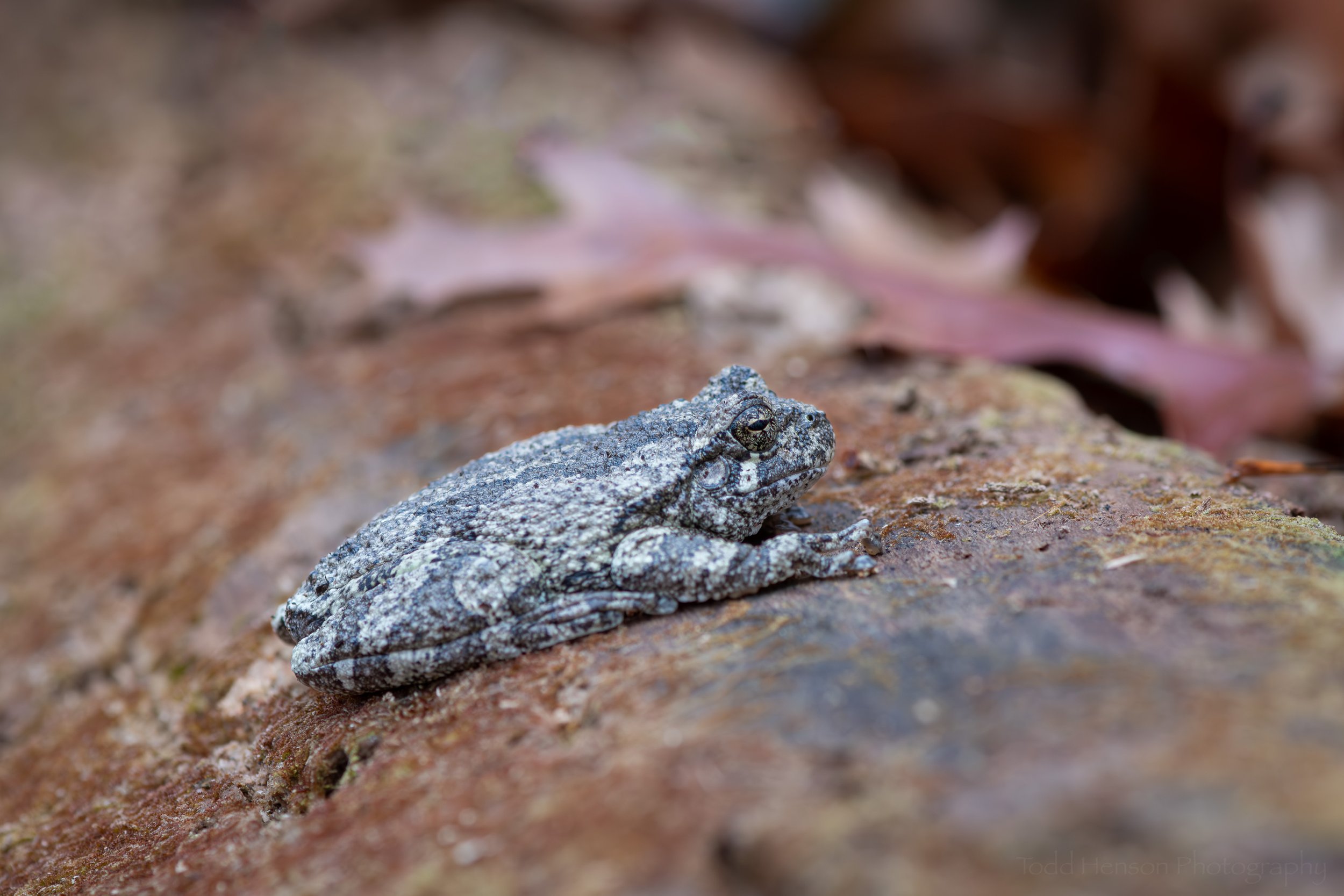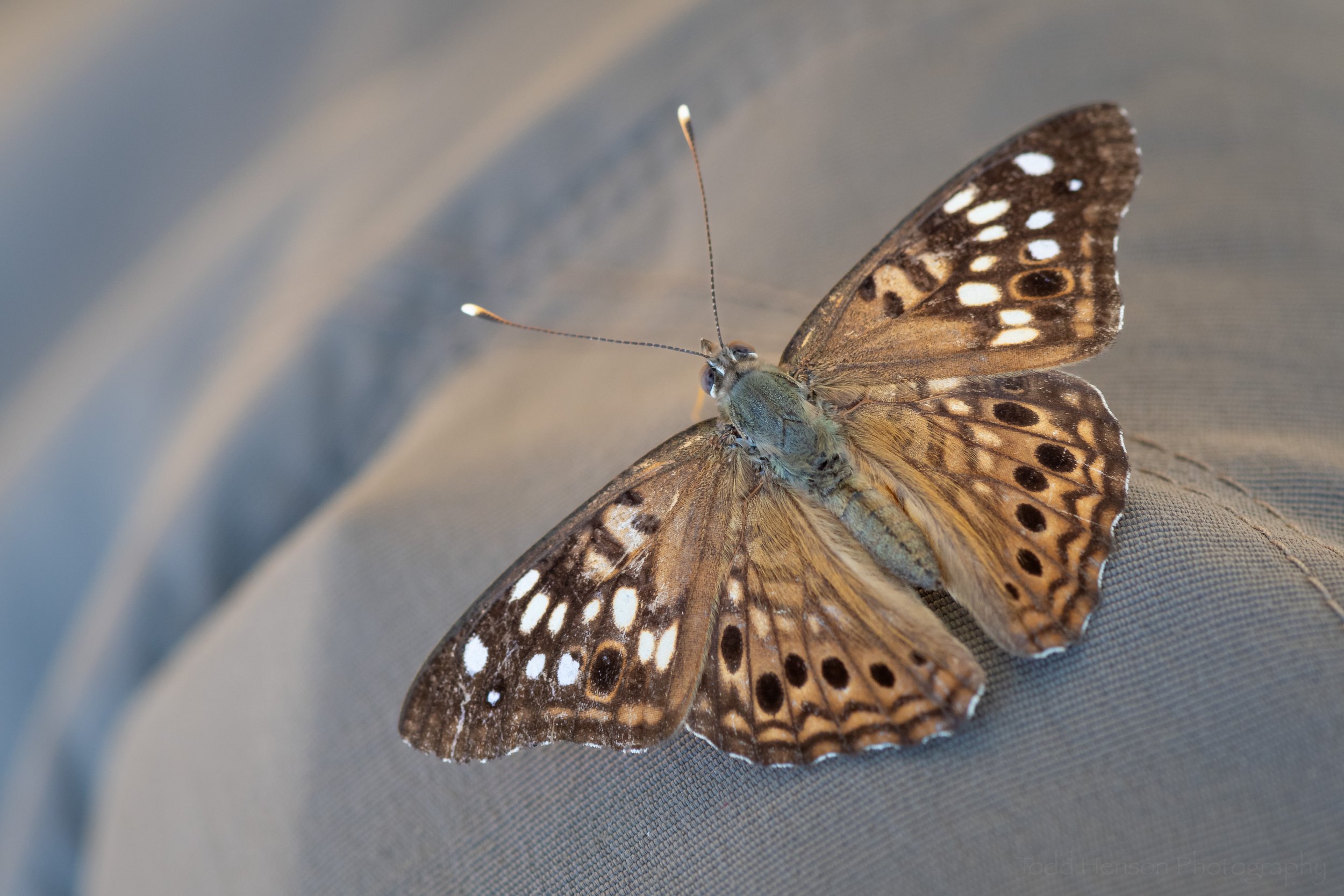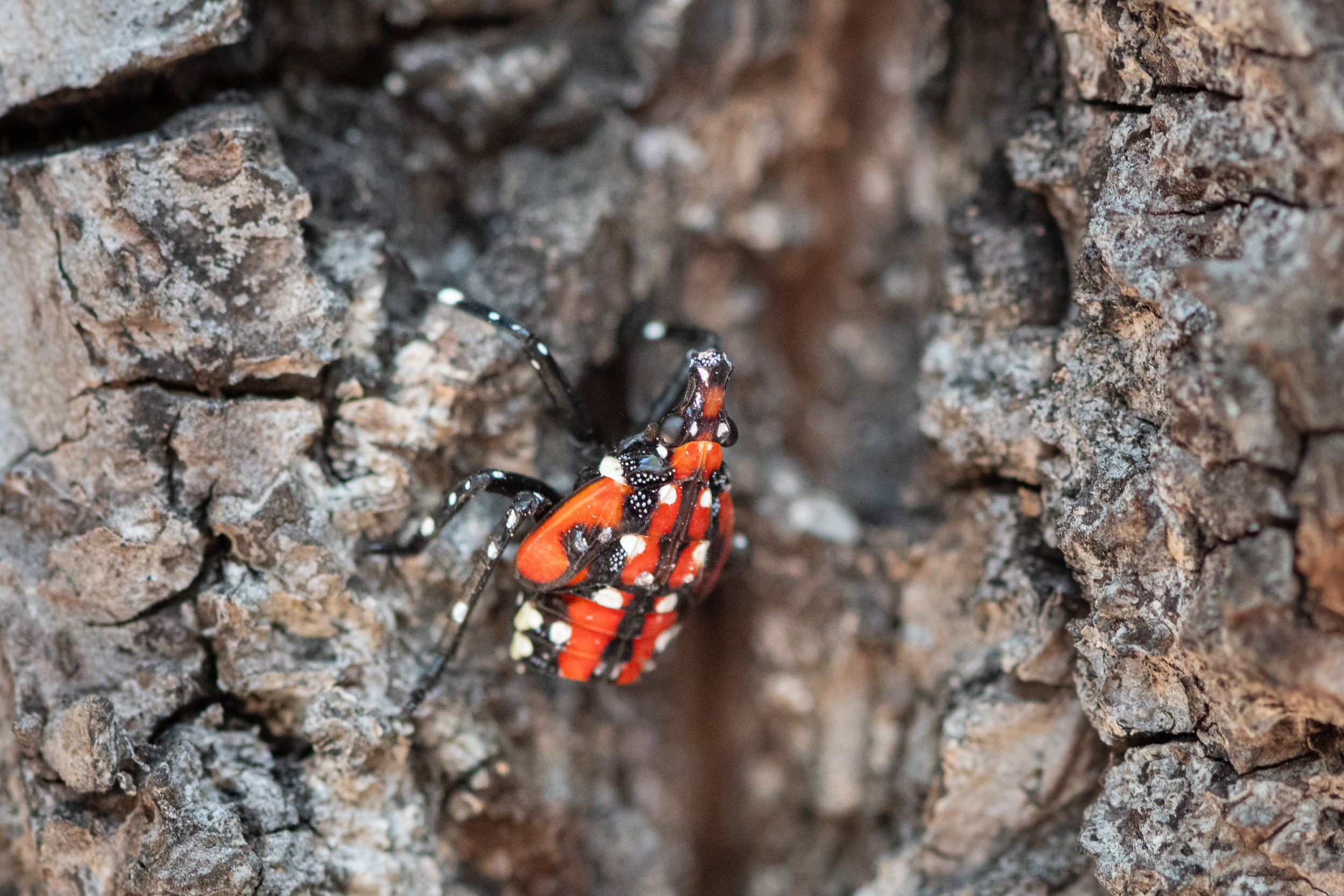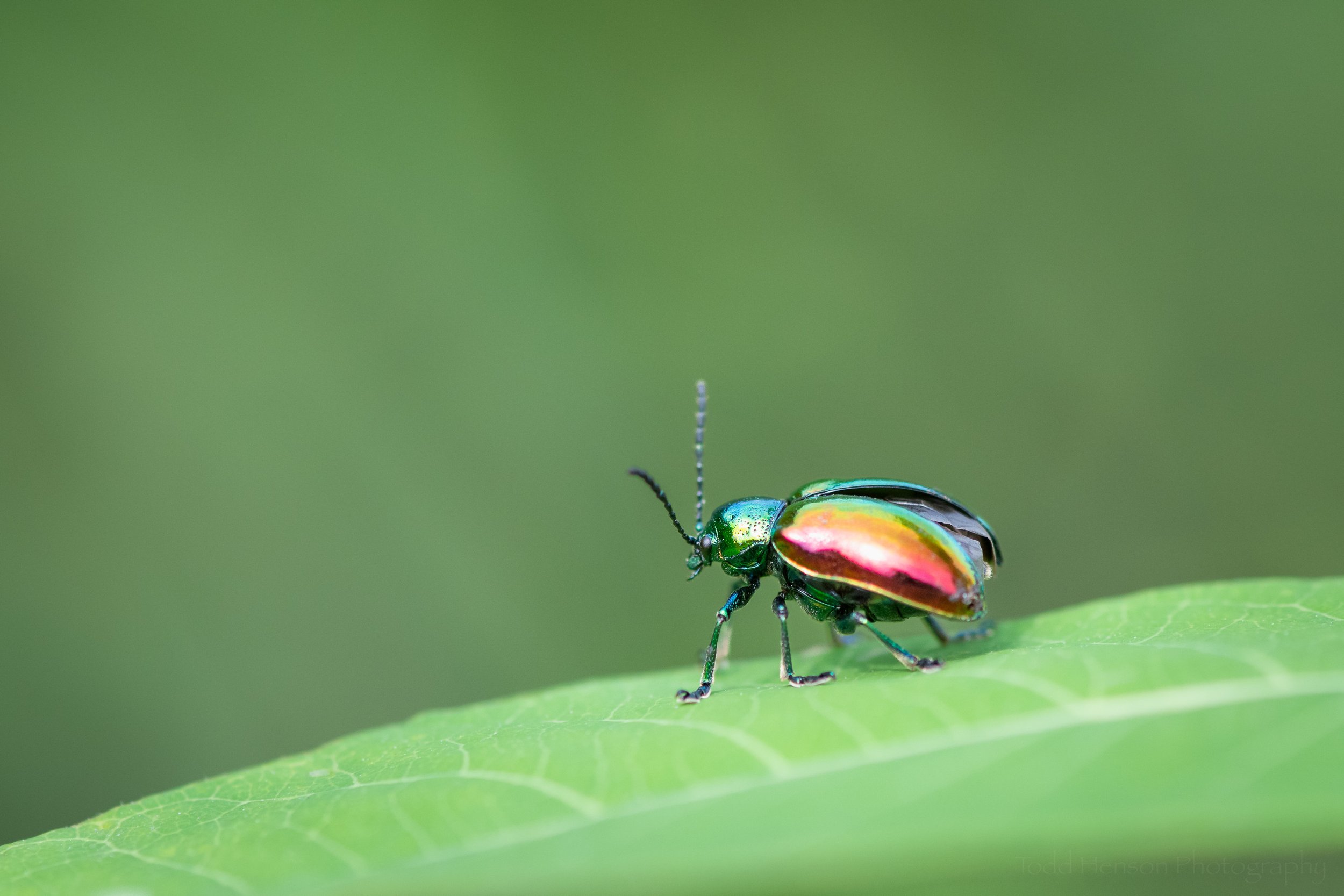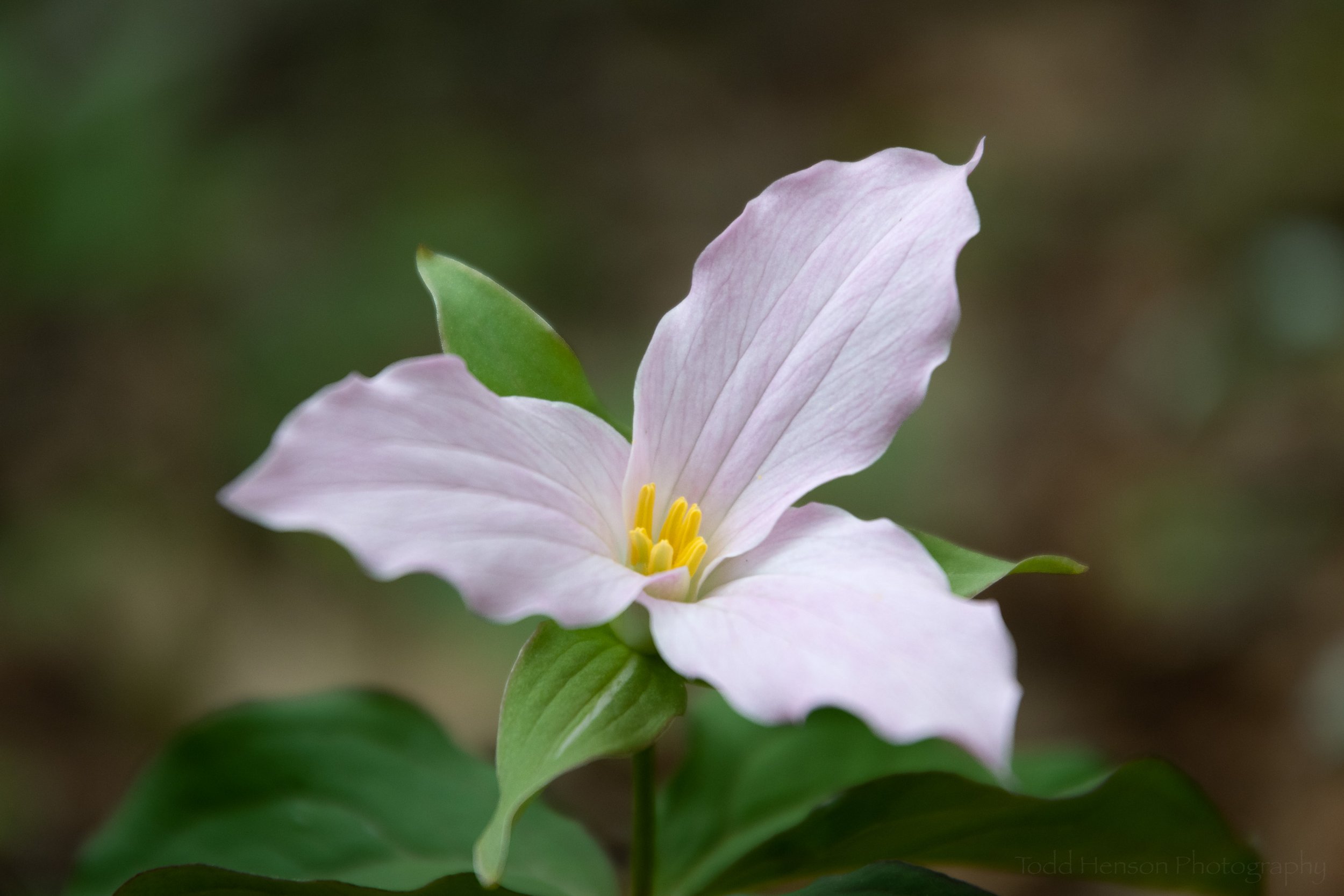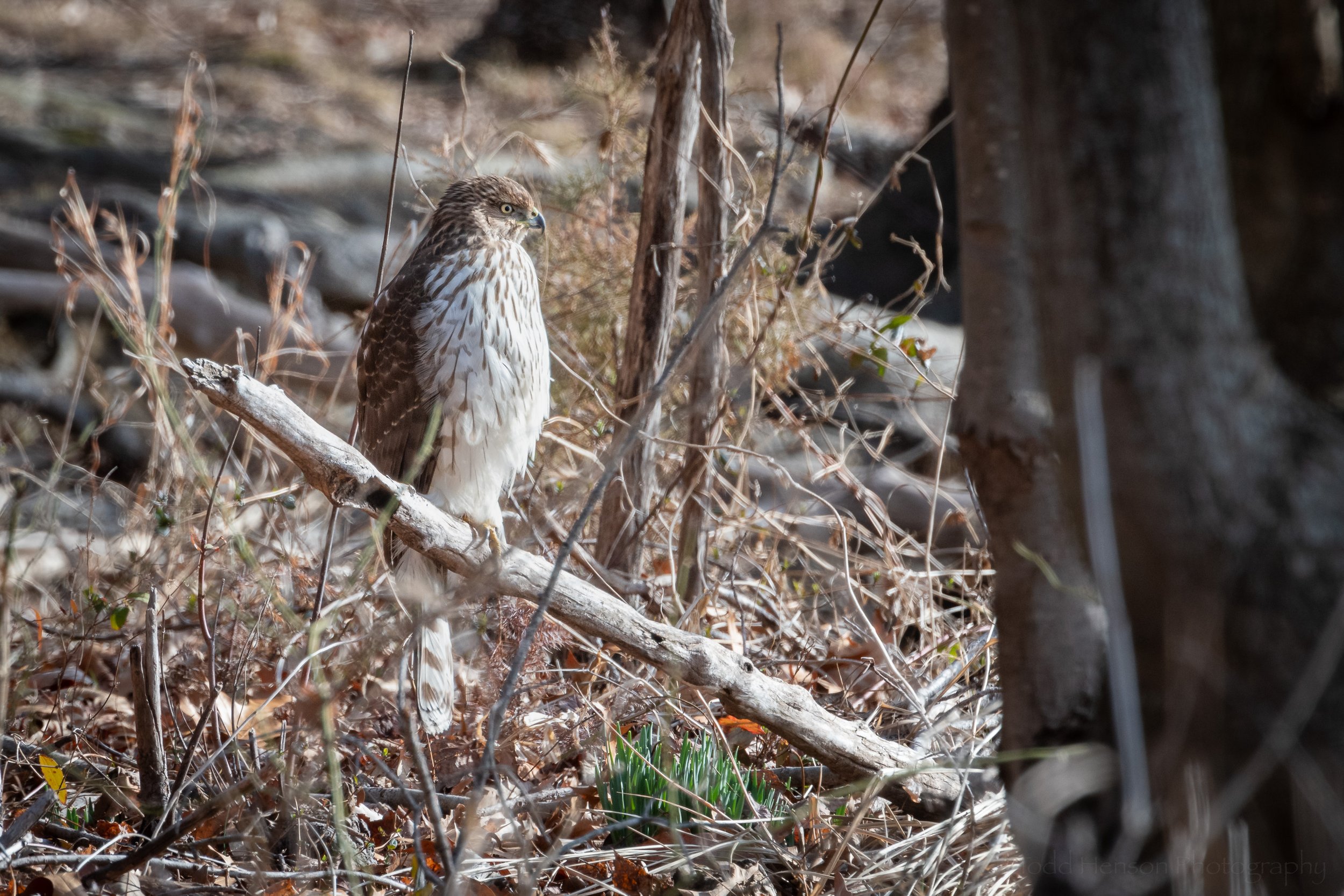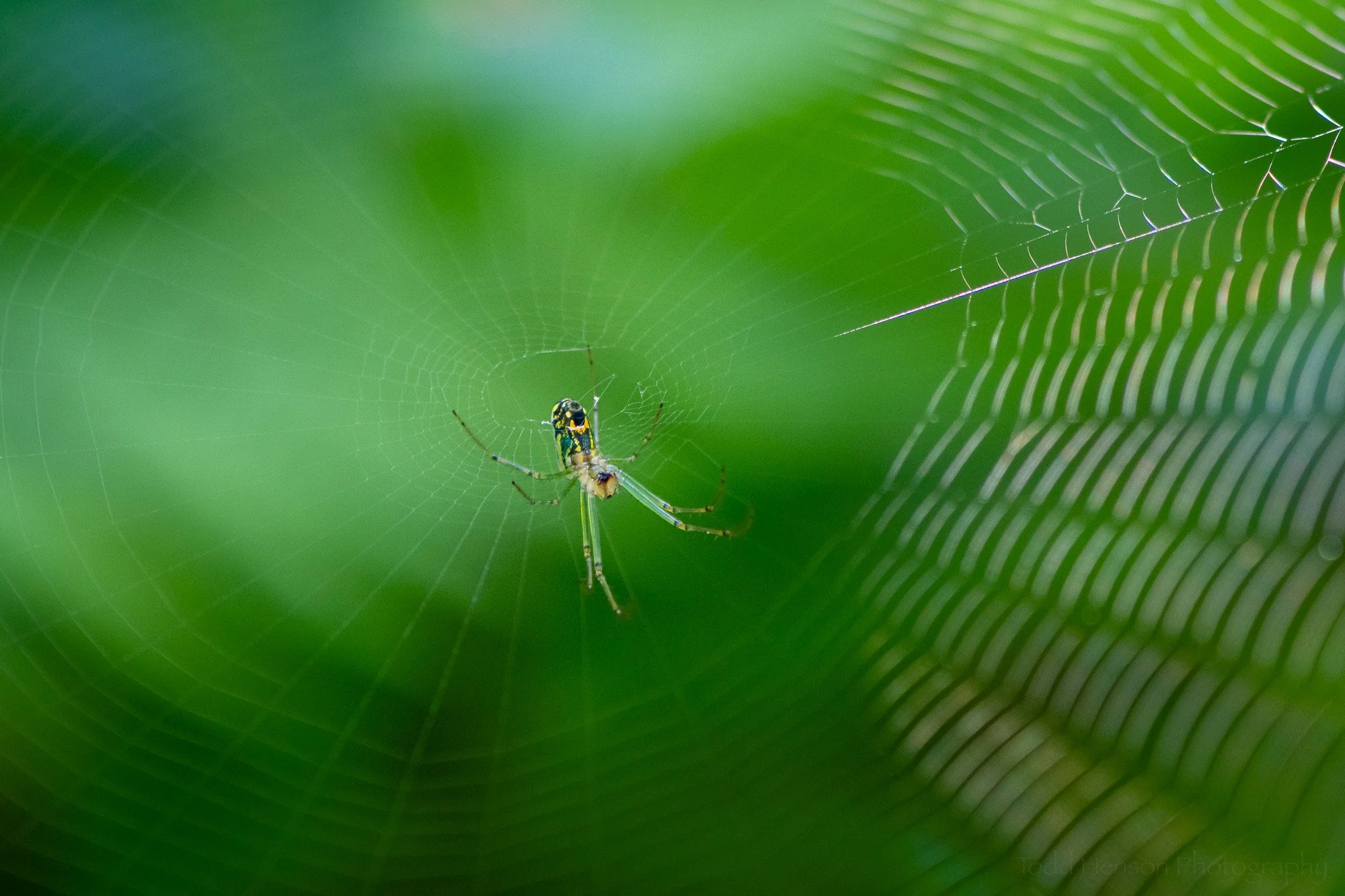A juvenile red-tailed hawk cooling down in a puddle of water
Back on April 16 of 2017 while hiking the trails of Occoquan Bay National Wildlife Refuge I was waved over by another photographer. He had found a juvenile red-tailed hawk that had landed in a puddle of water in the brush not far from the trail. Being in the brush it was a bit obscured so the photos may not graduate into the artistic realm, but they do provide some good views of this beautiful young hawk.
When the hawk stood tall it showed off its white chest feathers
A profile view of the juvenile red-tailed hawk
It's interesting the flexibility hawks have to twist their head and look straight up
Being a juvenile its tail feathers haven’t yet developed that striking rufous coloration the species is known for, though you can see hints of the color. This hawk was a very light colored one as you can see when it faces its chest towards the camera and in the one flight photo I captured (though the bird was blurry in the photo).
Every so often the juvenile red-tailed hawk would look straight at the camera.
Zooming and cropping in shows details of the hawk's head and shoulders
I spent about 40 minutes photographing this young hawk, going a bit overboard by capturing 250 images, many almost the same. When I first arrived it was standing in the puddle where it spent most of that time. It appeared to be cooling off. At one point it lowered itself and ruffled its feathers just as ducks do from time to time. It walked out of the puddle for a short bit before going back into it. Only about 37 minutes later did it take flight into some nearly branches before a few minutes later taking off for some other location.
The juvenile hawk had just lowered itself into the water and ruffled its wings, splashing the water all over itself
See how the young hawk blends into the brush?
Eventually the young hawk flew into a branch partially obscured by the brush
I love spending this much time with a single animal that isn’t at all concerned by my presence. I stayed put on the trail. It stayed put in the puddle just off the trail. And even though I did create too many images, it enabled me to get various views of the hawk and to share some of those with you. I hope you enjoy looking through these photos of a beautiful young red-tailed hawk.
When the young hawk bends over we can begin to see the early signs of the rufous coloration in its tail feathers
One final view of the perched juvenile red-tailed hawk before it flies away
Though the hawk is blurry, this photo does a decent job of showing the light coloration on the underside of the juvenile red-tailed hawk's wings
Do you enjoy these posts?
Sign up to receive periodic emails with updates and thoughts. Don’t worry, I won’t spam you. And please consider purchasing artwork or products from my online store, and using my affiliate links in the sidebar to the right when shopping online.
I appreciate your support!
